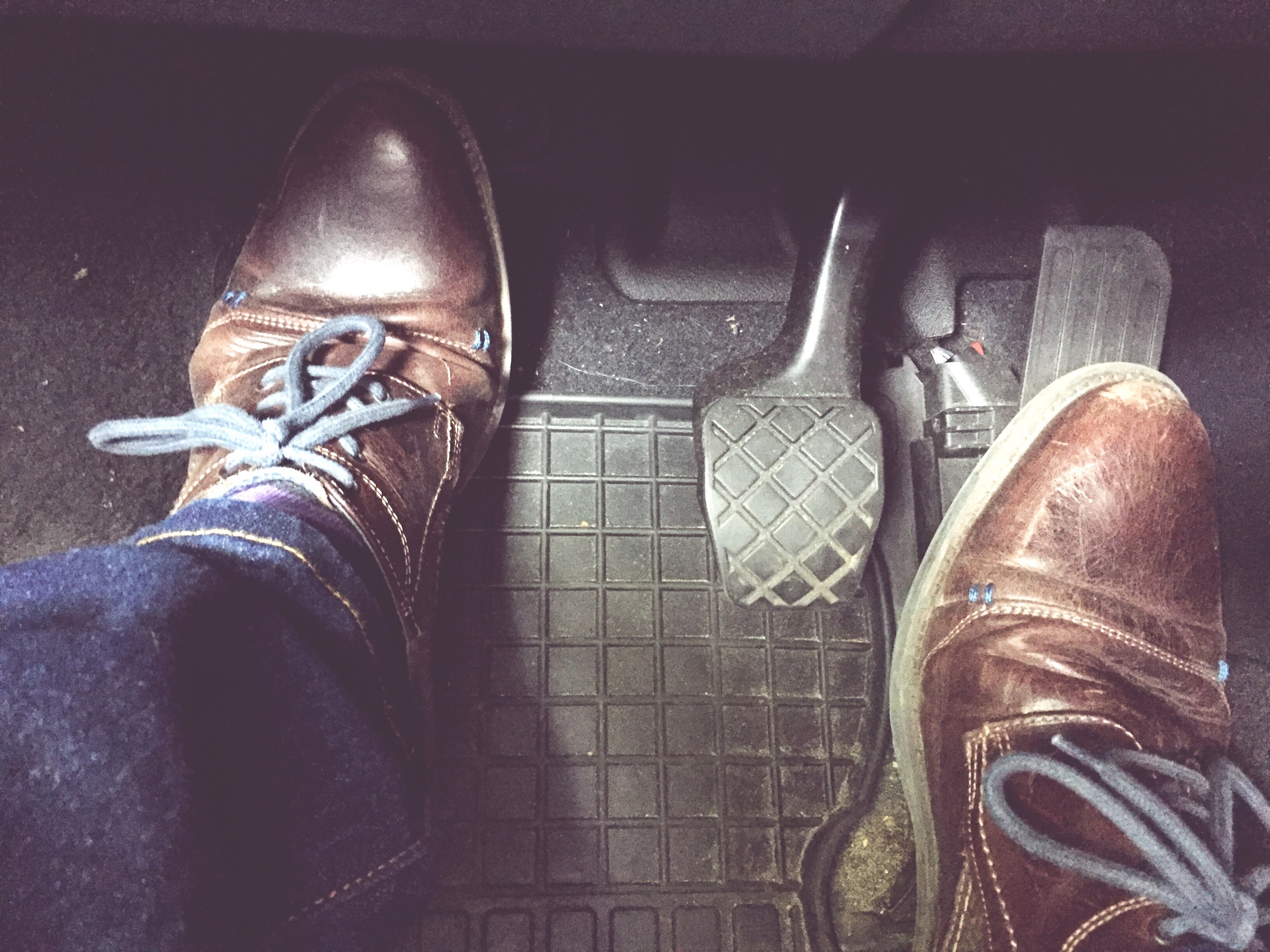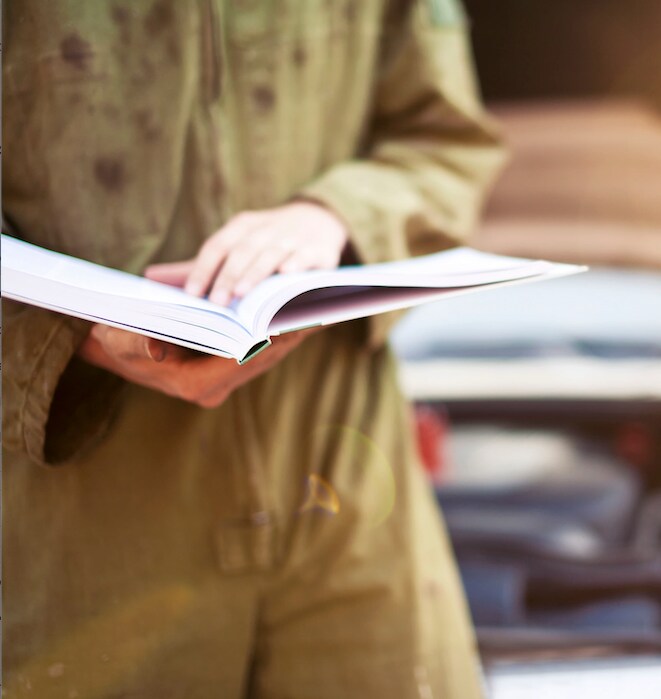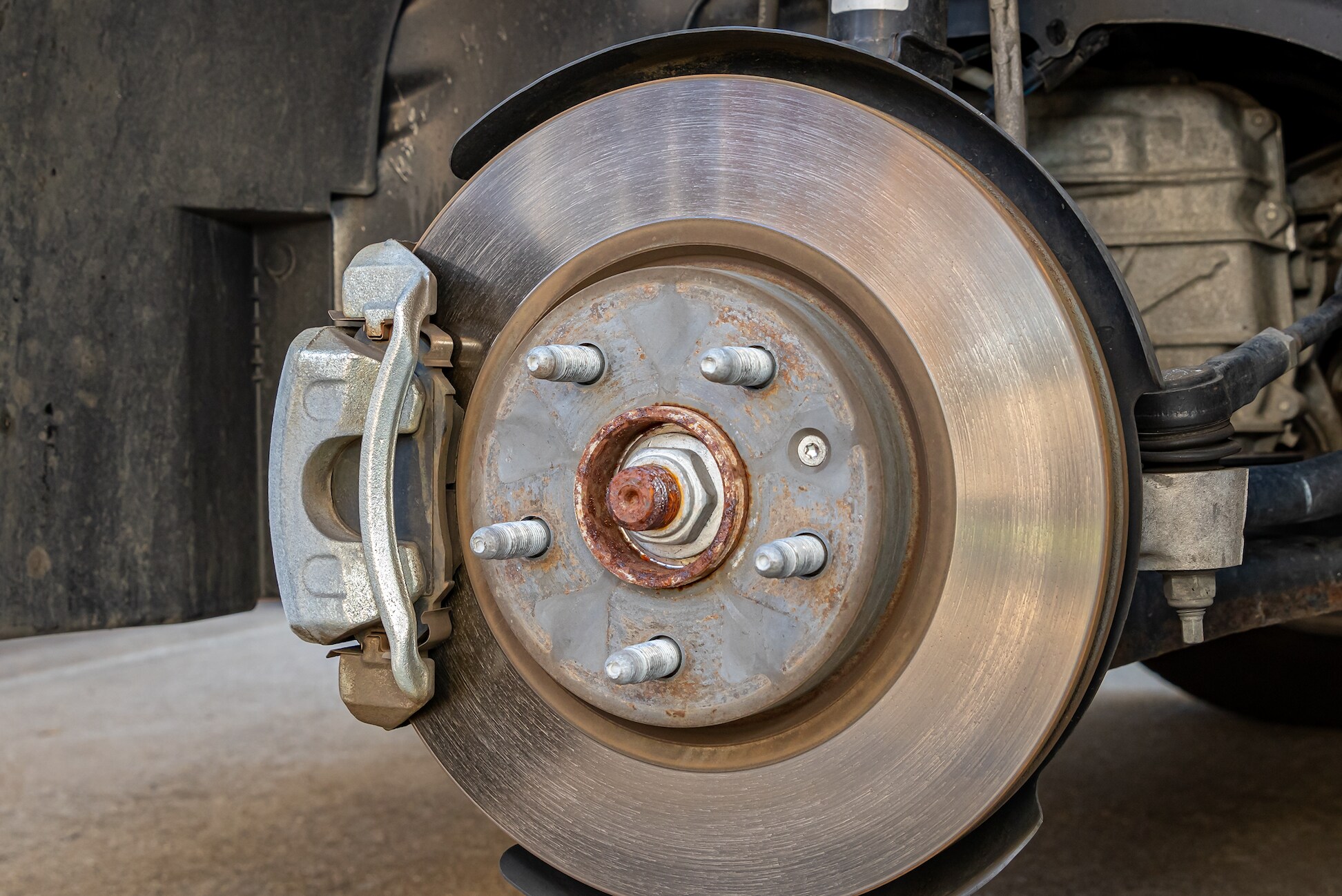The most important safety devices on your car are the tires and brakes. You always want to make sure your tires and brakes are properly maintained and in good shape before you head out on the highway. While brake components don't last forever, you can add to their life by following the tips in this article. You can actually add to the life of your brakes and make them last longer. Have your brakes inspected by an ASE-certified technician every six months to check brake pad wear, rotor wear, and to top off your brake fluid. Factors such as how you drive, how you brake, weather conditions, temperature, and the quality of your brake pads and rotors can have an impact on the life of your brakes. Have your brakes checked every time you have your tires rotated.
New Life for Your Brakes

Tips for Extended Brake Life
The first thing you can do that will add to your brake life is to adapt your driving style. In other words, slow down. When you speed and slam on the brakes, it wears down the brake pads and rotors quicker. Makes sense, right? The harder you are on the brakes, the quicker you'll use them up. The faster your drive, the harder your brakes will have to work to get you stopped. So, slow down and apply your brakes gently and evenly. They will last a lot longer if you use them sparingly and bring your car to a gradual stop.
Other ways that your driving style can shorten the life of your brake components include pulling heavy trailers, riding the brakes, and overheating the brakes by over braking on downhill slopes. If you have a lot of weight in your vehicle or are towing a lot of weight, it puts extra pressure on your pads and rotors which will work harder to bring that load to a stop. Reducing weight will add to brake life. You'll get better gas mileage too.
Before the Screeching Starts
Some people use their left foot to brake and the right foot to accelerate. Pushing the brake pedal while pushing on the gas is called "riding the brakes" and it's one of the fastest ways to wear your brake components down. It can result in reduced brake pad life and warped rotors. Get used to only using your right foot to handle both braking and accelerating. You don't need to do both things at the same time. Put that left foot all the way to the left and leave it there. You only need it if you have a standard shift with a foot clutch. Watch your speed and the way you brake when traveling downhill on a steep mountain grade. Riding your brakes will heat up the brake components and if your brakes get too hot they will fail. When descending a hill, put the vehicle in a lower gear to slow it down and apply the brakes lightly as needed to slow down.
Ongoing Maintenance
Follow the advice of your vehicle's Owner's Manual for brake service. When your car is properly maintained, the brakes will last longer. Your Lithia Motors service technician will check the wear of your tires, check the brake fluid and will flush and refill the fluid as required in your maintenance schedule, and examine the wear of your brake pads and rotors. Performing regular maintenance will make sure your brake system is in optimal condition for many worry-free miles ahead.
By following the above tips to drive properly and maintain your vehicle, you'll get the most life out of your brake components. Don't scrimp on the cost of brake pads, use quality OEM pads for optimal performance.


When Brake Rotors Warp
The metal discs that are squeezed by your brake pads thanks to the hydraulic pistons in your brake calipers are designed to last a long time. Most brake rotors will last an estimated 70,000 miles. However, constant aggressive braking can overheat the rotors and cause them to warp. If you apply the brakes hard and feel a "shuddering" effect pushing back at the brake pedal, your rotors are warped. You'll feel an uneven pulsing in the steering wheel too.
When warping occurs, it is best to replace both front rotors to maintain even braking. As little as .001 inches of thickness variation can cause noticeable pedal vibration. However, it is possible to get more life out of the rotor by having it "resurfaced" using a brake lathe. Rotor distortion can also be caused by improper tightening of the lug nuts due to uneven torque. When resurfacing rotors, it is important to clean the face of the hub and the inside of the rotor hat to remove any rust, dirt or debris that can cause gaps between the rotor and hub.
As mentioned, friction from brake pads against the rotors can generate a great deal of heat and overheating can cause the life of brake components to be much shorter. Cars that operate primarily in stop-and-go traffic or that pull a trailer and drive over mountains will wear the brakes out much faster than cars that spend most of their time in light traffic. Overheating can lead to hard spots on the rotors that extend below the surface and that can only be solved by replacing the rotors.
In many cases, a rotor that has enough metal remaining can be resurfaced. In order to assure the longest life for your brake pads and rotors, always change the brake pads when the rotors have been resurfaced or replaced. As of this writing, the national average cost to resurface a brake rotor is just $36 each, where the average cost to replace a rotor is $80 and you'll need two of them. Expect to pay $300 to $500 per axle to have the rotors and brake pads replaced.
Let Lithia Help
With over 75 years of experience in servicing all makes and models of cars, trucks, and SUVs, Lithia Motors has a dealership near you. Our ASE-trained technicians can service your vehicle's brakes quickly and easily to get you back on the road with the peace of mind that comes from fresh new brakes and tires. Find the service center near you right here.


